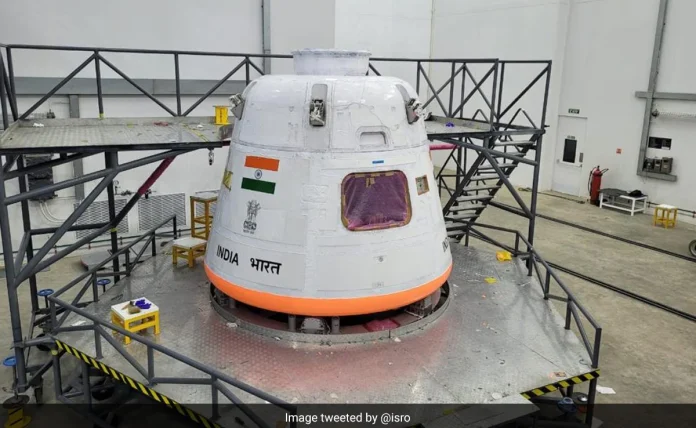The Indian Space Research Organisation will carry out the first of several test flights ahead of the Gaganyaan mission on October 21, said Union Science and Technology Minister Jitendra Singh on Tuesday.
The test involves launching the module to outer space, bringing it back to earth, and recovering it after touchdown in the Bay of Bengal, according to a report published by the news agency PTI.
The test vehicle development flight (TV-D1) will be conducted at the Satish Dhawan Space Centre in Sriharikota in Andhra Pradesh to test the crew module that is scheduled to house Indian astronauts during human spaceflight late next year.
Addressing the felicitation ceremony of the ISRO engineers involved in the Chandrayaan-3 and Aditya L1 missions, Singh said the Navy has already started mock operations to recover the module.
In addition, the TV-D1 will also test the “crew escape” system that is expected to bring back the crew to Earth if the spacecraft faces a problem while ascending into space, PTI reported.
He added that the success of the test will set the stage for the first unmanned “Gaganyaan” mission and ultimately, a manned mission to outer space in a low-earth orbit.
“Before the ultimate manned “Gaganyaan” mission, there will be a test flight next year, which will carry “Vyommitra”, a female robot astronaut,” Singh added.
The Gaganyaan mission is aimed at developing a human-habitable space capsule that will carry a three-member crew into an orbit of 400 km (250 miles) for three days, before returning to safety in a planned splashdown in the Indian Ocean.
The Ahmedabad facility will be responsible for building two critical systems for the Gaganyaan mission- the cabin systems and communication systems.
The cabin will house three seats for astronauts, along with a lighting system and two display screens to monitor various parameters inside the cabin. One of the significant features of the Gaganyaan cabin will be its camera sensors, which will track oxygen and carbon dioxide levels, ensuring the safety and well-being of the astronauts during their mission.
The mission is expected to have internet facilities, cameras throughout the cabin and two TV monitors to keep astronauts connected and informed.






